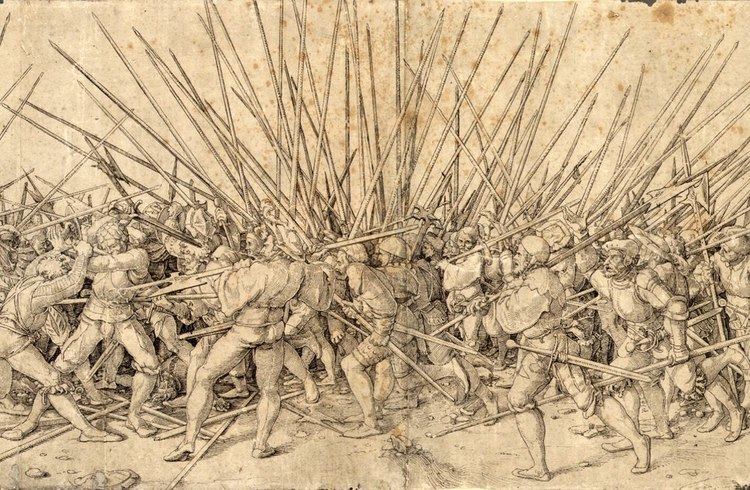 | ||
The push of pike was a particular feature of late medieval and Early Modern warfare that occurred when two opposing columns of pikemen (often Swiss mercenaries or Landsknechte) met and became locked in position along a front of interleaved pikes. During push of pike, opposing blocks of pikemen would advance with their pikes "charged" horizontally at shoulder level to jab at one another until bodily contact was made. The two sides would then push physically until one or other of them gave way. The push of pike would continue until one of the opposing formations routed or fled, which would generally lead to massive casualties. Each man pressed on the one in front, and so sometimes the formations would crush against each other and many pikemen would have to fight in closer melee combat. The Italians referred to this as 'Bad War' after seeing Swiss pikemen become locked in thick combat, where because both formations refused to back down both sides lost huge numbers of men in the bloody melee. Rodeleros along with the Doppelsöldner were used in order to break push of pike engagements. The push of pike played an important role in the English civil war as one-third of the infantry consisted of pikemen. Pikemen often cut down the lengths of their pikes in order to make them more manageable. This habit had on many occasions disastrous consequences as the side with the longest pikes had the advantage during push of pike.
Battles involving push of pike
Anglo-Spanish War (1585–1604):
